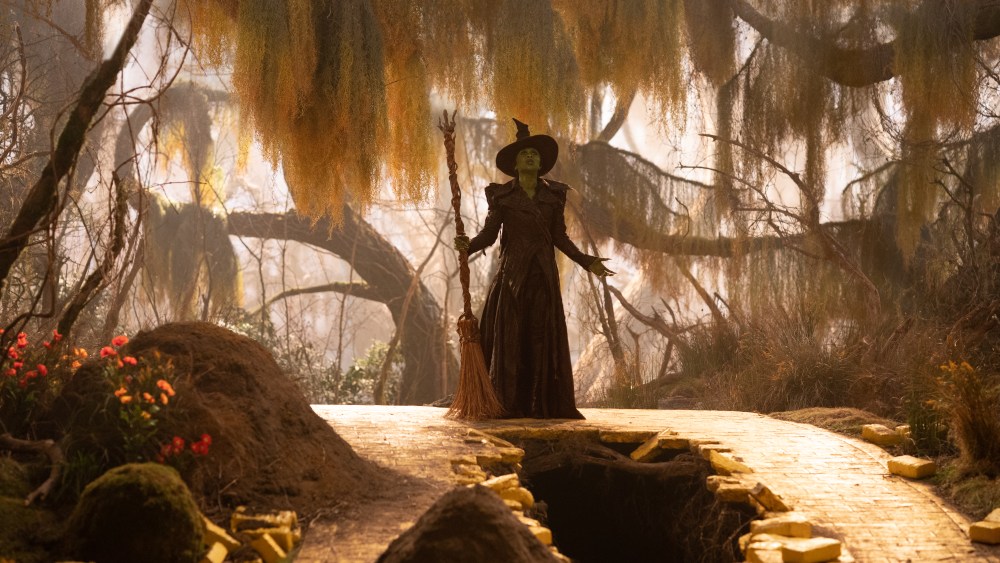Production designer Nathan Crowley found a way to expand the world of “Wicked” in its conclusion, “For Good.”
The story of Elphaba (Cynthia Erivo) and Glinda (Ariana Grande) follows the choices and consequences of the witches in the first Wicked. In “Wicked: For Good,” Elphaba is declared an “evil witch” and decides her fate.
As a result, she ended up hiding in the forest.
“In the stage play, it’s called a cave. It’s a hiding place,” Crowley explains. In his design, Crowley said the forest was “full of circular, rotating trees. They formed fluid shapes.” One of his ideas was to put Elphaba in the canopy. Although it wasn’t in the script, there was a mother tree in the Forest of Oz, and the idea was to build a nest there.

Cynthia Erivo plays Elphaba in Jon M. Chu’s WICKED FOR GOOD.
universal pictures
“She has to travel to the West. She has to become the Wicked Witch of the West,” he says. So the forest was to the west.
To build the nest, Crowley collected wood from local forests and asked the green department if he could use it to weave the nest. “We gave them a big bunch of green wood, we gave them a platform at the right height, and we had the scaffolding and steel department help with the structure,” he says, adding, “It was a very organic set. They twisted and knitted all these beautiful shapes.” It took a total of six weeks to assemble the set. “The windows were fluidly integrated into the structure.”

He also considered the way cinematographer Alice Brooks lit the film. “The mold-making department came up with a giant silicone leaf mold and hand-painted the veins on it. It was transparent so we could put it on the roof, so light could shine through to Alice,” he says.
Crowley also had to make a bed in the nest. “It’s branches woven together to make a bed. I can’t say I knew what it was when I was making it,” Crowley smiles. “It was a piece of sculpture. It’s completely an art installation.”

